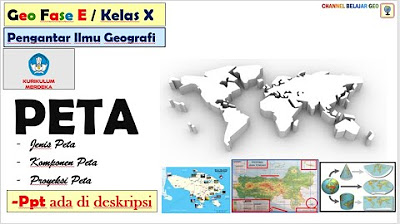How to Read a Weather Map
Summary
TLDRIn this educational video, Duane from the University of Illinois Extension explains weather symbols on TV maps. 'H's indicate high pressure areas with fair weather and clockwise air movement. 'L's signify low pressure zones, associated with stormy weather and counterclockwise air flow. Cold fronts are blue with pointed lines, warm fronts are red with rounded symbols, both showing air movement direction. Stationary fronts have alternating symbols, while occluded fronts in purple indicate fading low pressure. Understanding these helps predict weather and wind direction.
Takeaways
- 🌍 The script discusses how to interpret weather maps with symbols for high and low pressure systems.
- ⏱️ Weather forecasts are commonly watched on TV to understand upcoming weather conditions.
- 🔵 'H's on a weather map represent high-pressure areas, which are usually associated with fair weather.
- 🔵 Air moves clockwise around high-pressure systems.
- 🔴 'L's on a weather map represent low-pressure areas, which are typically associated with cloudy or stormy weather.
- 🔴 Air moves counterclockwise towards low-pressure systems.
- ❄️ Blue lines with triangles indicate a cold front, showing the direction of colder air moving.
- 🔥 Red lines with semicircles represent a warm front, showing the direction of warmer air moving.
- 🔄 A line with alternating cold and warm front symbols is a stationary front, indicating no significant movement between air masses.
- 🟣 A purple line with both cold and warm front symbols on the same side is an occluded front, signaling the end of a low-pressure system.
- 🌬️ Understanding these symbols allows one to predict wind direction and weather conditions based on the positions of 'H' and 'L' on a weather map.
Q & A
What do the 'H's on a weather map represent?
-The 'H's on a weather map represent areas of higher air pressure, which are generally associated with fair or good weather.
In what direction does the air move around a high-pressure system?
-Air moves in a clockwise fashion, away from the high-pressure system.
What weather conditions are typically associated with 'L's on a weather map?
-'L's represent areas of lower air pressure, which are generally associated with cloudy or stormy weather.
How does the air move around a low-pressure system?
-Air moves in a counterclockwise fashion, towards the low-pressure system.
What do the blue lines with points on a weather map indicate?
-The blue lines with points indicate the leading edge of colder air, known as a cold front, with the points showing the direction the cold air is moving.
What is the significance of the red lines with rounded symbols on a weather map?
-The red lines with rounded symbols represent the leading edge of warmer air, known as a warm front, with the rounded edges showing the direction of air movement.
What is a stationary front and how is it depicted on a weather map?
-A stationary front is a line with alternating cold and warm front symbols, indicating that two different air masses are next to each other but neither is moving.
How is an occluded front represented on a weather map?
-An occluded front is represented by a purple line with cold and warm front symbols on the same side, indicating that the low-pressure system is beginning to fade away.
What can you predict from the direction of the wind on different parts of a weather map?
-You can predict the weather conditions and the movement of air masses based on the direction of the wind indicated by the symbols on a weather map.
How can you determine the type of weather occurring based on the positions of 'H' and 'L' on a weather map?
-You can determine the type of weather by observing whether the area is under high pressure ('H') which is typically fair, or low pressure ('L') which is typically stormy.
What is the general weather pattern around high-pressure systems?
-The general weather pattern around high-pressure systems is fair or good weather, with air moving away from the high-pressure area in a clockwise direction.
What does the direction of the points on a cold front indicate?
-The direction of the points on a cold front indicates the direction in which the colder air is moving, typically pushing warmer air ahead of it.
Outlines

This section is available to paid users only. Please upgrade to access this part.
Upgrade NowMindmap

This section is available to paid users only. Please upgrade to access this part.
Upgrade NowKeywords

This section is available to paid users only. Please upgrade to access this part.
Upgrade NowHighlights

This section is available to paid users only. Please upgrade to access this part.
Upgrade NowTranscripts

This section is available to paid users only. Please upgrade to access this part.
Upgrade Now5.0 / 5 (0 votes)





